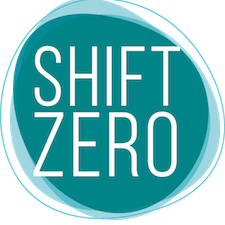C-PACER Implementation in Washington State
C-PACER allows property owners to access financing for qualifying energy efficiency, renewable energy, water conservation, and resiliency improvements for their buildings. The financing stays with the property, rather than with the building owner. Programs like C-PACER have enabled financing for over 2,000 property owners in 24 states and the District of Columbia.
Between 2017 and 2022, members of the Shift Zero C-PACER Task Force led extensive stakeholder engagement and advocacy to enable Commercial PACER financing in Washington, through the passage of HB 2405 and SB 5862. Now, it is up to individual counties to take action to create their own programs and help buildings become more efficient and resilient. As of August 2022, Clark, King, Pierce, Snohomish, Spokane, Thurston, and Whatcom counties have adopted C-PACER ordinances and will be developing programs. MRSC has a blog post on implementation, as well as links to implementing ordinances.
Washington C-PACER Model Program Documents
In 2020, Shift Zero worked with the C-PACE Alliance to draft model program documents, to ensure consistency of programming for both capital providers and building owners and providers across the state.
>>Download Washington C-PACER model program documents here (updated March 2022)
Creating a county C-PACER program is simple: a county adopts an ordinance and guidelines that govern how the C-PACER program works. The repayment of the C-PACER financing is between a private lender and a property owner; a county only records the agreement. Program implementation, such as marketing or education, can be limited or extensive, as suits a county’s needs.
For more information:
Background on C-PACE Financing
Since 2010, more than $1 billion have been invested in commercial building improvements in more than 20 states through an innovative economic development tool called Commercial Property Assessed Clean Energy (C-PACE). Fourteen more states have recently passed PACE enabling legislation and are now developing PACE programs.
In Washington state, a coalition of economic development, private industry, social justice, and environmental stakeholders came together to develop and support legislation to enable Commercial PACE in Washington, adding an “R” to PACE to emphasize that this type of financing can also cover resilience measures, such as seismic retrofits, stormwater measures, and fire protection, in addition to clean energy and efficiency.
Understanding PACE
PACE financing is a financing tool that enables building owners to pay for critical building improvements that make their properties more valuable by reducing operating expenses, improving the health of occupants, and strengthening long-term sustainability. PACE financing provides a way for local governments and private lenders to cooperate on loans secured by the property tax obligation, similar to a local improvement district. The debt does not appear as an obligation on the building owner’s balance sheet, and the repayment obligation stays with the property rather than the owner whenever the building is sold.
With PACE financing, private lenders fund improvements in new and existing commercial, industrial, non-profit, and multi-family buildings that improve their long-term economic and environmental sustainability through:
| Energy & water efficiency | Renewable energy | Seismic hardening |
| Fire protection | Flood readiness | Energy storage |
PACE loans follow well-regulated underwriting practices to ensure that the equipment pays for itself over the financing term. PACE financing is secured by placing a lien on the property for the term of the debt, which typically lasts 15-25 years. This long term allows property owners to invest in efficiency improvements that raise net operating income and increase property values, where other forms of financing typically would not be cost effective for making such facility investments, especially for short-term holders of commercial properties. Property owners and municipalities have no obligation to participate, so there is no concern on their part if they find PACE financing is not right for their building or community.
 PACE is an economic development engine that’s energized local economies from D.C. to L.A. and thousands of cities and towns in between. PACE helps local communities:
PACE is an economic development engine that’s energized local economies from D.C. to L.A. and thousands of cities and towns in between. PACE helps local communities:
SAVE MONEY – Property owners are more focused today than ever before on energy and water conservation. PACE helps reduce utility bills by lowering energy costs. Long term pay back can make PACE-funded projects immediately cash flow positive.
SPUR ECONOMIC DEVELOPMENT – PACE funded projects create more jobs and economic activity. According to the 2011 study by ECONorthwest, every $1 million in project spending results in 15 new jobs and $2.5M in economic output.
MEET CLIMATE GOALS – PACE helps communities achieve important energy and water conservation goals. Efficiency projects upgrade old equipment which reduces energy use, while renewables replace fossil fuels and reduce greenhouse gas emissions.
